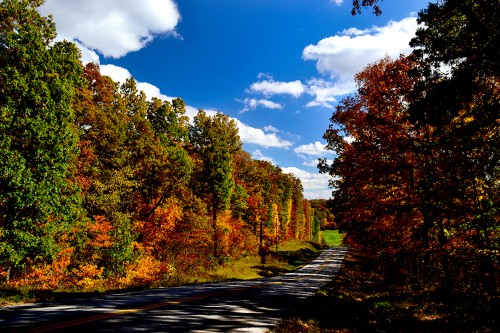 Some days you think you’re going to post some pretty pictures and go to bed early. Then, unfortunately, you start doing a few searches and find yourself going off in all kinds of tangents.
Some days you think you’re going to post some pretty pictures and go to bed early. Then, unfortunately, you start doing a few searches and find yourself going off in all kinds of tangents.
On October 20, Mother and I took the back roads from Perry County down CR 535 through Neely’s Landing and into Cape. I wanted to see if I could find the mass grave from the 1869 Steamboat Stonewall tragedy that killed between 200 and 300 people. I found A cemetery, but I’m pretty sure it’s not THE cemetery. More about that later. (You can click on the photos to make them larger.) The green patch at the end of the road is Dog Holler, just down the road from the High Hill Church and Cemetery.
Obsessed with dogs
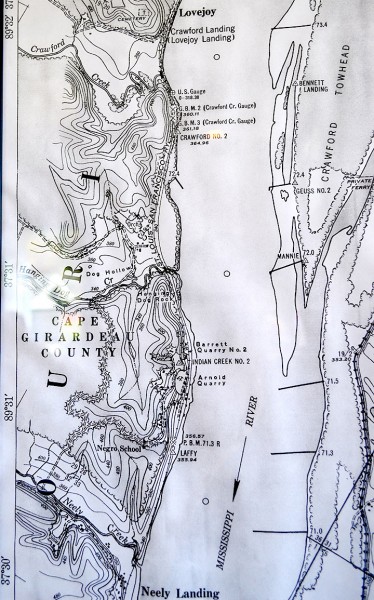 Friend Shari and I stopped in at a new restaurant in Pocahontas (more about that later, too). The owner said she and her husband live on a farm in what they call Dog Holler and pointed to a map on the wall (where it is officially known as Dog Hollow). I knew that area. It’s a neatly cleared valley surrounded by rugged hills with wild timber. Just after you go around a curve, you pass a driveway with “Dog Holler” on it.
Friend Shari and I stopped in at a new restaurant in Pocahontas (more about that later, too). The owner said she and her husband live on a farm in what they call Dog Holler and pointed to a map on the wall (where it is officially known as Dog Hollow). I knew that area. It’s a neatly cleared valley surrounded by rugged hills with wild timber. Just after you go around a curve, you pass a driveway with “Dog Holler” on it.
The time waster was when I decided to look more closely at the map and saw somebody was doggone dog-obsessed. There was Dog Hollow; Hanging Dog Rock; Dog Island; Hanging Dog Creek. Another map showed Hanging Dog Island.
Hanging Dog Rock survey marker
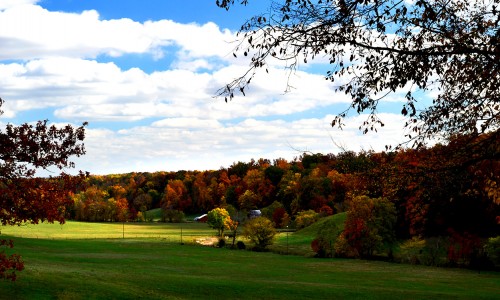 I didn’t find out how the rock got its name, but I found a mention of it in the Results of Spirit Leveling in Idaho, 1896 to 1914, Inclusive, Issues 565-569. To my surprise, the book wasn’t dealing with whether spooks in Idaho were off-kilter. It was a listing of United States Geological Survey markers.
I didn’t find out how the rock got its name, but I found a mention of it in the Results of Spirit Leveling in Idaho, 1896 to 1914, Inclusive, Issues 565-569. To my surprise, the book wasn’t dealing with whether spooks in Idaho were off-kilter. It was a listing of United States Geological Survey markers.
There is one located at “Neely Landing, about 4,000 feet below, 3 feet north of east-west rail fence, on land of Mr. Wagner, between the St. Louis & San Francisco R.R. and the river, about in line with outer point of Neely Landing and highest trees on top of bluff below Hanging Dog Rock, 45 feet east of lower headblock of Neely siding, 115 feet north of cattle guard; iron pipe (U.S.C.E. b.m. triangulation Dutch) (lat 37° 29′ 22.58″; long 89° 29′ 45.57″). It is 350.87 feet above mean sea level.
If you go to page 5 of the book, you can see what all those abbreviations mean and how the makers were placed. Took me right back to Ernie Chiles’ Earth Science class.
Two steamers sunk off Hanging Rock
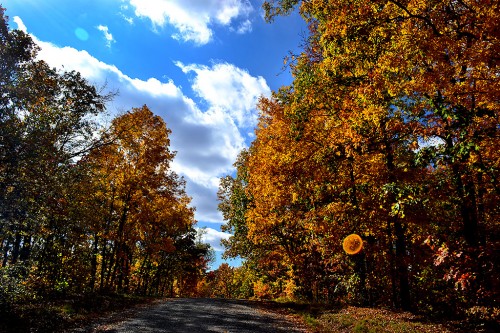 An 1867 report to the Secretary of War listed two unknown steamers sunk in the Mississippi river off Hanging Dog Rock. This was two years before The Stonewall burned in the general vicinity.
An 1867 report to the Secretary of War listed two unknown steamers sunk in the Mississippi river off Hanging Dog Rock. This was two years before The Stonewall burned in the general vicinity.
For what it’s worth, the report also mentioned two unknown steamers sunk at Old Cape; Talisman, collision, foot Cape Girardeau bend, and two unnamed steamers at the foot of Cape Girardeau bend. That’s about where the barges broke away and sank earlier this month.
[By the way, for my friends who are ghost chasers and UFO fanatics, the light blue object in the sky and the orange orb at the right are not flying saucers and ghostly images; they are internal lens flare caused by shooting almost into the sun.]
You may get more leaves
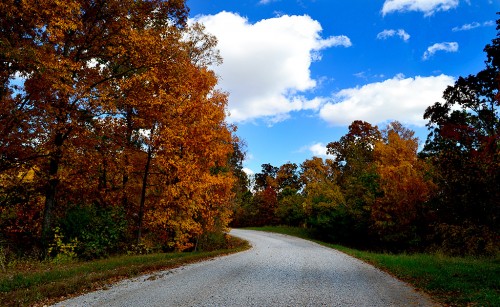 I thought I had run out of leaf pictures, but they keep showing up when I look at what I’ve taken on this trip. There aren’t many fresh ones to shoot, though. They’re either turning brown or they’ve fallen.
I thought I had run out of leaf pictures, but they keep showing up when I look at what I’ve taken on this trip. There aren’t many fresh ones to shoot, though. They’re either turning brown or they’ve fallen.
Polarizing filter
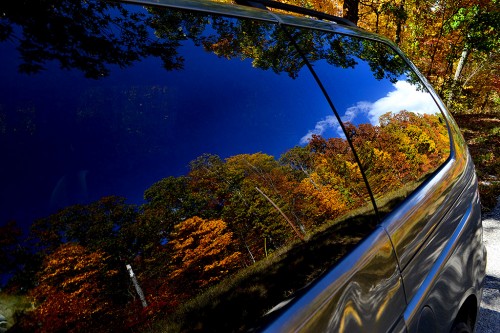 I keep a Hoya polarizing filter on my lens almost all of the time. It’s particularly important when you’re shooting colorful foliage. Not only does it make the sky a nice, dark blue, but, more importantly, it cuts through the reflections ON the leaves, making them appear richer.
I keep a Hoya polarizing filter on my lens almost all of the time. It’s particularly important when you’re shooting colorful foliage. Not only does it make the sky a nice, dark blue, but, more importantly, it cuts through the reflections ON the leaves, making them appear richer.
Sometimes, though, you don’t want to knock the reflections down. When I walked back to the car after shooting one of these photos, I noticed a really cool reflection in my car windows. If I twisted the polarizer to eliminate the reflection of the trees, all I would have had was a photo of the interior of a messy van. That, of course, was not my goal, so I minimized the effect of the filter.

If you go to the rock quarry at Neely’s Landing there is a navigation light for the river traffic called Hanging Dog Light.
Thanks for all the fall leaves photos. Only someone from the fall-swept areas would think they’re almost all gone. To me, where they’re green and tropical all year, they’re spectacular. I think you depend on the red and brilliant orange ones to determine when it’s over. But yellow-golds and rusts and burnt orange and yes, sienna are gorgeous all mixed together, too, with the odd green setting them all off. I almost smell wood burning when I see these. Is it because most people start their fireplaces around this time?
Mother lit the fireplace a couple of weeks before I got home to take the chill off. There’s one burning behind me right now.
I described the beauties of a fireplace last winter.
Um …. WOW! These are just spectacular, Ken. Thanks so much for posting. I particularly like the one of the reflection on your van. That’s the best your van has ever looked, don’t you think?
Maybe I could get it made into an overlay and drive around looking like that all the time.
Beautiful pictures that make me home sick !
Thanks for posting!
Your pictures are so amazing! I am ashamed of the few I took last week at Big Cedar Lodge near Branson. I wish I had you with me to take the beautiful views from our cabin deck. I did have a visit from a skunk while enjoying the view with my glass of wine! Keep up the good work Ken. It is a joy to see your sights and stories every day.
Beautiful photos. And I like it when you provide photo tips. I had read about polarizing filters for years but just bought one before a trip to Alaska this summer. I was please with the results. Thanks for the reminder that I need to keep it handy more often.
I’m impressed with how they make even ordinary photos better. You don’t realize how many distracting reflections there are until you can take them out.
I always carried a bunch of filters in my black and white days – UV on the lens all the time for protecting the glass; red to darken skies; green to darken sky and lighten green foliage; one that (mostly) corrected for florescent light when shooting color; a polarizing filter and a cross screen filter that created star patterns radiating from lights.
I used them sparingly because it was hard to gauge their effect until you had processed the film, plus they complicated determining your exposure.
Digital photography has pretty much eliminated the need for the color correction filters. I still keep a UV filter or the polarizing filter on to protect the front lens element.
Hello Ken: I enjoyed your pictures on Dog Holler my Name is Larry Miller, I live accross the road from where you saw the sign Dog Holler. I grew up at Neely Landing. My home farm was purcahsed by P&G back in 1967-1968. I have a picture history of Neelys Landing and would be happy to share info that I know. Hanging Dog Rock was blasted away when the railroad came through in 1905. The Stonewall sank North of where Indian Creek dumps into the Mississippi River. The mass grave was that area.
Thanks. Dick McLard and I may come knocking on your door one of these days. He’s become interested in the story of the grave, too.
Sounds like the railroad blasted through a lot of landmarks. Cape Rock lost its point when it was blasted away for the tracks.
Any idea what the dog fixation was in that area?